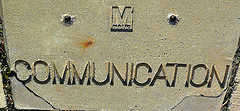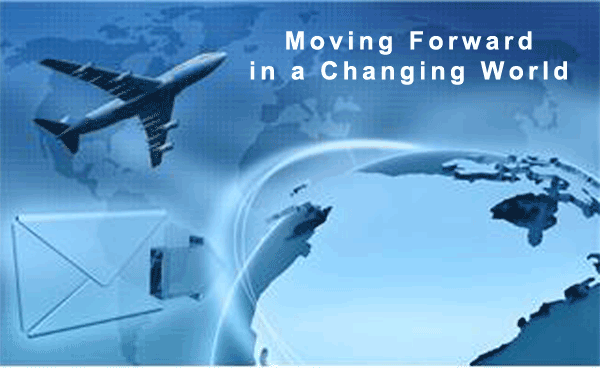Browse by Tag
- "Real" Innovation (2)
- Alignment (6)
- Business Innovation (9)
- Business Plan (2)
- Business Plans (1)
- Creativity (24)
- Critical Success Factors (4)
- Entrepreneurship (9)
- Global Competiveness (4)
- Human Side (11)
- India (1)
- Innovation (4)
- Innovation Consulting (18)
- Innovation Killers (3)
- Innovation Management (18)
- Innovation Tools (17)
- Innovation Training (24)
- Innovations (7)
- Inventions (16)
- IT Innovation (1)
- Leaders (5)
- Leadership (20)
- Leadership Development (13)
- Organizational Leadership (2)
- Organizational Strategy (20)
- Personal Values (6)
- Prediction (5)
- Strategic Innovation (38)
- strategic planning process (4)
- Strategy (3)
- Training (1)
- Vision (5)
- Weekly Dose (8)
Posts by Month
- 2014
- 2013
- 2012
- 2011
- 2010
- 2009
- 2008
- 2006
5 Important Innovation Change Questions
In our experience at the DeSai Group, when dealing with innovation as a major change initiative, employees seek answers to these five questions:
- What is happening with the innovation program?
- Why are we pursuing innovation as a major change?
- When is it going to happen?
- How will I be impacted during the rollout and after implementation?
- Where can I go with more questions, issues, and concerns related to the innovation program in my area?
What if we do not communicate to staff?
If these questions are not answered, you are leaving it to chance for employees to create their own interpretations, leading to possible negative consequences and waste of your valuable resources.

Communication Plan Template
Your high-level communication plan may include these points:
- Develop answers to the five questions. Then make sure the questions are addressed in every innovation initiative communication document, meeting, and webcast.
- Develop a one-minute message--your elevator pitch about the innovation program. It should describe the business case and vision for the future.
- Demand consistent dialog at all levels, especially middle management.
- Use multiple media to teach and tell--remove uncertainties and doubt from day 1.
- Clearly identify the objective of each communication: awareness building, skill development, network development, employee engagement, and so on.
- Check often for alignment of process objectives and productivity for the parties in the communication activity.
- Be open to examine and test for what people hear.
- Actively respond to feedback and make adjustments to the plan as required.
Communication, Communication, Communication
Don't underestimate the need to repeat the messages even when you know everyone has heard them time and again. Even with your best efforts, there are always many who will not understand the importance of the innovation change initiative.
There have been stories where after six months of implementation activities, senior executives have publicly asked, "Why are we doing all this innovation stuff?". Although this raised a few eyebrows, the question was taken seriously and led to rather thorough discussions of the whys that had not surfaced before.
The Takeaway
Innovation is about approaching products and processes in a different way. The communications surrounding the innovation effort require different methods as well.
Over to you. Please comment below.
- How do you disseminate information about your innovation change program?
- What else would you add to the communications plan template?
- What other questions do you find that employees tend to ask?
8 Environmental Factors Creating Organizational Friction
Mechanical organizations are machinelike and effective when the environmental factors are predictable. But in today's world, it is impossible for such companies to manage the type of change occurring around them. As an example, here are eight types of environmental factors creating friction at all levels:
1. Technological factors. Fast new technologies causing rapid product obsolescence.
2. Economic factors. Unpredictable prices, costs, currency rates, interest rates, taxes.
3. Competitive factors. Aggressive, global, highly innovative, threats from niche players, competitors who are also customers and partners.
4. Labor factors. Increased scarcity of skilled professionals, mobile workforce, increased employee benefits expenses, more reliance on contract labor.
5. Resource factors. Scarcity, increasing specialization, unknown sources of supply, rapid obsolescence.
6. Customer factors. More demanding, complex, market fragmentation, narrow market segments, increased acquisitions costs.
7. Legal and regulatory factors. More aggressive, increased costs, unlimited product liability, growing compliance on free and fair trade.
8. Global factors. Real-time communications, production, distribution, logistics, sophistication of supply chain partners, customers and competitors located anywhere in the world, outsourcing pressures, international strategic alliances.
Mechanical Engine Versus Innovation Engine
These and many other issues are generating additional pressures for today's employees and managers in an already mechanistic and heartless environment within organizations. Due to these pressures, leaders have focused primarily on survival, with little focus on achieving sustained growth.

Is there a way out? Yes.
The primary way out is to evolve today's strategic operating model based on mechanistic, bureaucratic, and hierarchical practices (machinelike) toward an innovation-driven execution model.
Machinelike companies focus on bottom-line performance as the primary measurement for most management decisions, at any cost. Focus is on the short-term. These firms are weak because they are inefficient at managing their future.
Experience shows that the companies that build an innovation engine are more adaptable, flexible, fast, aggressive, innovative, and able to adjust to dynamic, threatening, and a complex external environment. These firms do not take the external environment as a given. Instead, they embrace it as a challenge and act as an agent of change, leading customers, creating new markets, and rewriting the rules of the industry they serve.
Performance Wheel Versus Innovation Wheel
To better understand the two machines, I'd like to use the metaphor of a bicycle. The bicycle represents an engine. The fuel comes from a human being riding it, instead of gasoline/petrol we use in other machines.
The athlete riding is similar to the leadership team members who models the values, beliefs, skills, and behavior of the organization. The bike frame represents the organizational form-firm strategy, structure, processes, and culture.
The performance wheel is the back wheel, which represents practices for achieving organizational effectiveness, efficiencies, and stakeholder management and includes customers, suppliers, shareholders, and partners. This wheel is the source of power and acceleration for individuals, teams, and the organization.
The innovation wheel, the front wheel, represents direction and clarity about the future. It is the organization's capacity for two very important competencies: corporate entrepreneuring ( intrapreneurship) and strategic renewal. The front wheel is the first to sense new opportunities to maneuver based on the eight (internal and external) environmental factors listed previously. The innovation wheel provides the first experience of the environmental factors, the road ahead, and the ability to conduct quick experiments in the turbulent race.
Misplaced Organizational Focus
Unfortunately, today's organizations primarily focus on the back wheel to achieve bottom-line optimization, which is why it is called the performance wheel. The values of this wheel calls for power and acceleration, but if the motives of the organizational athletes (leaders at the top) are flawed, results can lead to disaster-we have seen plenty of examples. The company may move in wrong directions, lose focus on what is ahead, not make fast enough decisions to alter the path, not be sensitive to environmental conditions, and watch others pass by.
Without the front wheel of innovation, the organization has little to no strategic lens for what is possible ahead and what directional decisions to make because the front wheel is missing or ill functioning, most teams at the top make the same decisions as their competitors. The goal of this wheel is to turn the highly mechanistic athlete into an innovative competitor who can easily gather new knowledge, experiment fast, and adapt quickly to outmaneuver other competitors in the race.
Most organizations are pretty good at operating the back wheel; they just need to improve management practices and associated discipline. For managers, as practitioners, the back wheel is a safe zone because the artifacts used are metrics, scorecards, and quantitative analysis-hard stuff. For the front wheel, though, the primary values are qualitative, abstractions, and the intuition to make midcourse corrections. Due to emphasis on performance, managers lack experience operating the front wheel-the innovation wheel.
The Takeaway
The best performing companies evolve from machinelike short-term focus organizations to an innovation execution long-term focus.
It's Your Turn. Please comment below.
1. Is your organization focused on the performance wheel or the innovation wheel?
2. What steps has your organization taken to be more innovative and less mechanistic?
3. Which of the outlined Environmental Factors do you feel are most important?
Moving Forward in a Changing World
Today's modern leaders need to be prepared to guide their organization's innovation efforts. In this global economy, how to begin and how to structure are big questions. How exactly does one assess innovation readiness and what qualities, values and competencies will drive future success?
Competing on price alone in the long and even short run, is a losing strategy. Today, there are no safe-haven sectors, every industry is being re-shaped, and new competitive advantages average three months. Macro trends of globalization and automation continually shorten life span for products and services. Nimbleness is lacking, strategic and annual processes are not working, and multigenerational talent gaps are widening. (chapter 2, Assess Innovation Readiness, Innovation Engine)

The disruptive result is the shift of power from the board room to the marketplace. Many authors and experts have pointed out this trend, yet traditional business models in the main, have not yet adjusted. Spend Shift describes a post-recession values-driven economy, concluding that consumer expectations and behaviors will drive business decisions.
John Gerzema and Michael D'Antonio's latest book, The Athena Doctrine: How Women (and the Men Who Think Like Them) Will Rule the Future, may give us some important insight into the skills, values and competencies of an ideal world leader, as identified through a two year study involving 64,000 people in 13 countries that comprise two-thirds of global GDP. It comes down it seems, to an array of desirable skills related to an emerging form of leadership arising in the business world - skills, traits, values and competencies thought of by the majority surveyed, as feminine traits.
While 81% said both masculine and feminine traits are needed to thrive in this world, the survey strongly revealed that both women and men are frustrated with the traditional masculine conduct and business structures they believe to be responsible for the financial global crisis. Globally, the feeling is one of cynicism overall, distrust particularly in financial institutions, and an overwhelming opinion (86%) that organizations have accumulated too much power. The world is more social, global, and interdependent. While traditional practices in business, education, and government are increasingly ineffective in today's emerging global community and markets, we are seeing successful, new approaches to business as "millennials" enter the workforce with values that are challenging and changing the status quo.
In the August 7, 2013, article/video entitled Athena in Pinstripes, John Gerzema makes two glaring points:
- There are still a very small percentage of women in the board room, yet women influence 80% of purchases
- A public company today focuses on shareholder value. The company of tomorrow will focus on employee value and community value, recognizing who actually creates value within an organization.
As John Gerzema reminds us, Peter Drucker once said, "The Only Purpose of Business is to Have a Customer."
Getting back to assessing and planning, in Innovation Engine: Driving Execution for Breakthrough Results, Jatin Desai, in Chapter 2, "Assess Innovation Readiness," states that, "Innovation, if done right, should be an input to strategic planning, not an outcome." Building a supportive climate and culture of innovation requires an evaluation of not only a firm's offerings, but also the intent, knowledge, quality and ethics of a company and the skill set and values of its leaders. The overall theme really needs to be one of engagement.
Innovation Engine addresses how to assess innovation readiness, the factors that must be examined, the questions that need to be answered, how to develop the competency for deep insights, the roles of external environment and internal employee engagement, and the overall alignment of success factors.
Unfortunately, "In most companies, future-related decisions are based primarily on use of historical data. Hardly anyone brings explicit data about the emerging needs of current customers or defines new opportunities for evaluation … in most cases, the process lacks the collective wisdom and knowledge of the entire organization at large. … it is assumed that the top team, albeit most distant from the front line, has the required knowledge about the ever-changing products, technologies, and issues. This is an orthodoxy that is rarely, if ever, challenged." ( Innovation Engine, Chapter 2, p. 39).
Past methods do not guarantee future success. The role of transformative leadership is crucial, as it sets the tone, dialogue and pace of an organization's strategy and execution. If dominant logic is stifling, a learning culture does not exist, or a firm's access and commitment to technologies and resources are lacking, ultimately innovation will not likely succeed. Regardless of how brilliant an idea may be, or how aggressive leadership and management, if the organization is out of step with the markets, trends, desires and values of its potential customers, there is no business.
The success of future leaders is not "men versus women" despite Athena's survey results of 66% of those agreeing the world would benefit if men thought more like women. Feminine qualities like collaboration, Intuition, patience, flexibility and loyalty were ranked high as key leadership qualities. So were masculine qualities such as decisiveness and resilience, along with neutral qualities including intelligence, candor and vision. It seems the message to CEO's from Athena and Innovation Engine is, from the beginning of the innovation process:
- be a better listener, be inclusive embracing diverse mindsets and points of view
- strive to continuously engage your customers, employees and communities
Innovation Engine puts forth a solid methodology for assessing, aligning, mobilizing and leading innovation which is comprehensive and inclusive from the start, emphasizing the importance of developing an innovation framework, organizational structure and momentum that begins, plays and continues with people, including and accommodating all stakeholders. This is the new direction of the world, and thus, everything in it.
The future is upon us. Meet it with an open mind.
" Bon chance mes amis."
Creating the Purple Thing that Makes Trillions
Consider the following:
- The other day in a LinkedIn discussion on creativity as a precursor to innovation, someone commented that every discussion on creativity seems to devolve into personal or pet theories on the subject.
- A recent email with some insights from the HR Management Institute's conference on "Enhancing HR as a Strategic and Transformative Business Partner in Times of Volatility and Change," admonished: "If you're not authentically engaged in the competition for talent already, there's little time to waste. Nearly three million employees voluntarily left their employer in January, the highest level since June, 2008." One conference speaker followed up with a blog on "The Top 5 signs You're already Losing the Talent War"
- FEI posits that if you attend FEI US, you will, "Walk away with the answers and motivation to lead your organization into the next 10 years." The top 3 bullet points:
- Creativity under pressure
- Finding your next trillion dollar opportunity
- Creating an environment that breeds innovation

What this means:
- There is agreement that creativity is integral to innovation but disagreement on what it is and how to keep it flowing.
- If top management has not yet removed the barriers within your organization that stifle the flow of creativity and innovation, has neglected to create a viable and sustainable culture and climate in alignment with your vision, and still needs parameters in place to find good people and sustain relationships, you are backpedaling on the back roads in the state of outdated paradigms.
- In this exponentially changing business climate, the pressure to get ahead is weighing many organizations down, while the pressure to be sustainably edgy but relevant in finding the next innovative wave puts HR, R & D, and top management in far too many meetings. How innovative is your oganization?
Getting back to creativity as the agreed upon source of innovation, would it be beneficial to take a look beyond the structure, policies, vision and existence of the organization itself? Do culture and climate for innovation support have a tough road due not only to entrenched outdated evaluation, training, and leadership models, but perhaps also factors deeper in the societal fabric?

Why is creativity elusive and the creative process so hard to define? Consider this real life scenario.
The Artist. Eschewed a guaranteed-in to Harvard Medical School in the 1960's, left Duke University behind in 3 rd year to earn a degree in American Economic History attending night school at Long Island University; then thanking them for the offer to teach, became a graphic artist to earn a living after welding sculpture after-hours at an industrial job and using old tempura to create a first painting at 26. Has donated his time over the years helping kids find art expression with drawing and sculpting with found objects. His family was stunned by his decisions. He became an artist full time at 50. When asked the question, "What do you think is the biggest obstacle to encouraging creativity?" he replied: " Hardened arteries. Society, education, and business put rules and clamps on intuitive processes. Most art education is not art, is not creative, and at worst is manipulative. The regimentation seen in business begins in the schools. Artists do survive in spite of the schools and industrial environment, but not without emotional and psychological cost. We reward manipulation, not creativity."
All of us innately have a degree of creativity regardless of how or why, and the act of creating fulfills something in us that nothing else can. The real question may be why do we seemingly lose the ability to access it, or are reluctant to acknowledge and use it? Most likely the answer is lack of opportunity, practice and support. We're much too busy actively doing things society/business tells us we should do to be a success in life. As a result, not only do we personally not have time for creative pursuits or feel guilty when we do take the time, but for most of us our jobs and careers do not reward activity that is outside of the accepted norm, and daydreaming is a big no-no, as there is not an accepted cost center code for that activity. As a result, when we are asked to be creative or desire to be, we need to relearn and remember what it is.
How do you find Innovation: 11 Practical Ideas by Jatin Desai
Start Fooling Around - A Business Guide to Innovation
How are Innovation, Creativity, Engagement, Personal and Human Values linked?
Two quotes to enjoy:
"Imagination is more important than knowledge. I never came upon my discoveries through the process of rational thinking." ~ Albert Einstein
"When I was 5 years old, my mother always told me that happiness was the key to life. When I went to school, they asked me what I wanted to be when I grew up. I wrote down 'happy'. They told me I didn't understand the assignment, and I told them they didn't understand life." ~ John Lennon

